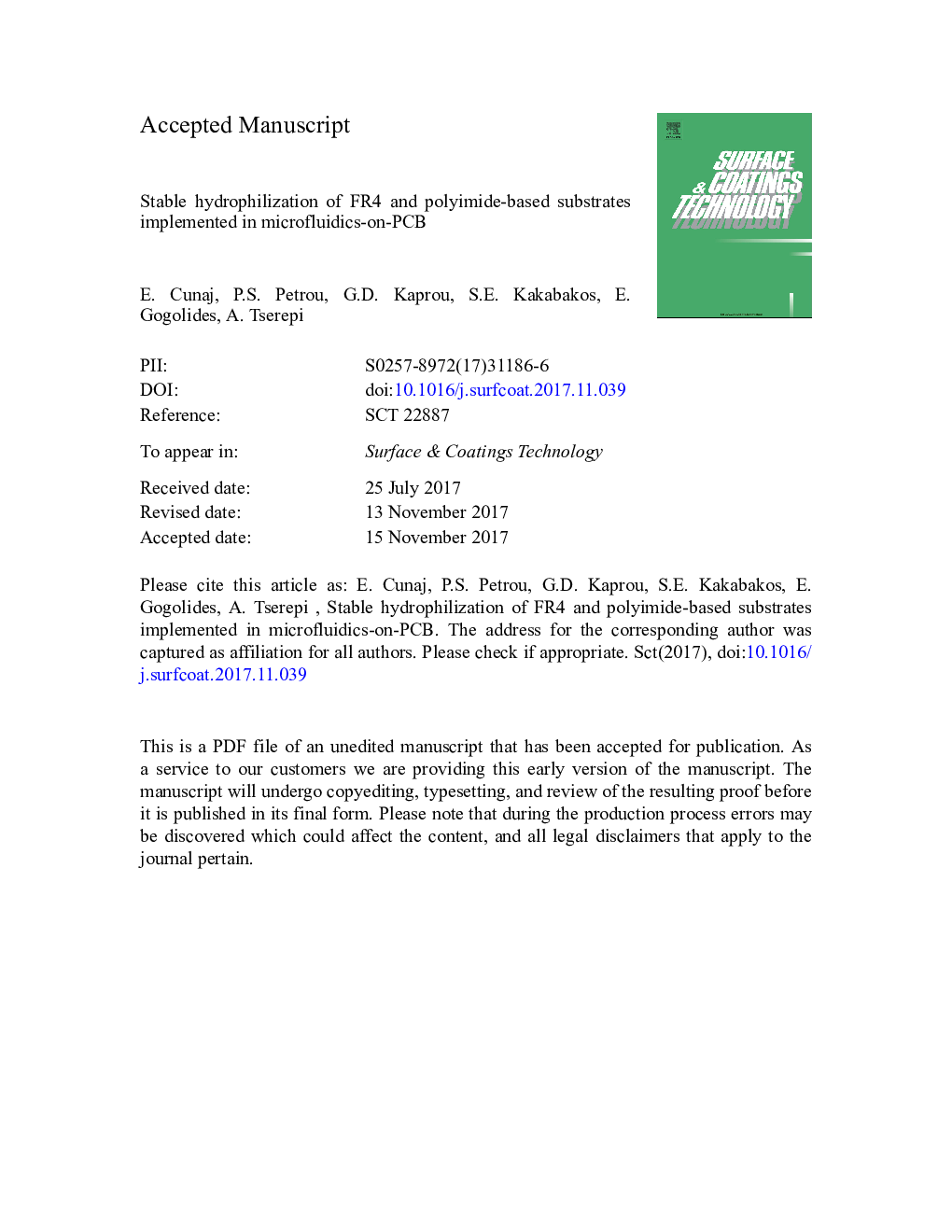| Article ID | Journal | Published Year | Pages | File Type |
|---|---|---|---|---|
| 8024580 | Surface and Coatings Technology | 2018 | 29 Pages |
Abstract
Materials of relevance in Printed circuit board (PCB) technology such as FR4, polyimides, and imide-based photosensitive dry films are being currently implemented for the fabrication of microfluidic devices integrated on PCB with electric circuitry and sensors. In this work, methods for efficient and stable in time hydrophilization of these substrates were developed to promote microchannel filling and prevent protein or other biomolecule adsorption. Well-established and easy to implement methods such as plasma etching and PEG coatings were explored. The wettability of the modified surfaces was probed as a function of time after surface hydrophilization by means of water contact angle measurements, while assessment of protein adsorption was implemented as a means to investigate the presence of protein-repellent PEG coatings. Surface superhydrophilization with extreme stability over time at room and elevated temperatures was demonstrated on plasma micro nanotextured polyimide surfaces, retained for up to 80Â days. FR4 and photosensitive imide-based dry film surfaces were hydrophilized with stable in time PEG-silane coatings, also retaining their hydrophilicity at elevated temperatures. Furthermore, they were most successfully (super)hydrophilized with UV-assisted PEG coatings, also proven stable in time and at elevated temperatures. Finally, capillary pumping was demonstrated on open microchannels created on FR4 with optimal coatings.
Related Topics
Physical Sciences and Engineering
Materials Science
Nanotechnology
Authors
E. Cunaj, P.S. Petrou, G.D. Kaprou, S.E. Kakabakos, E. Gogolides, A. Tserepi,
